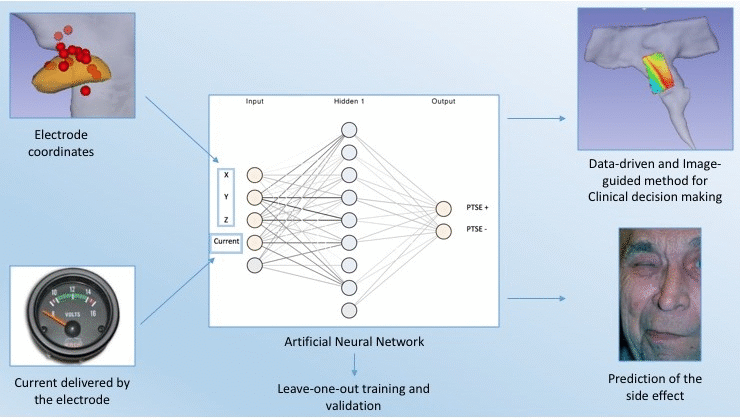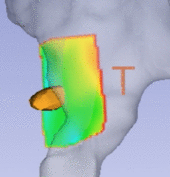
Subthalamic nucleus deep brain stimulation (STN DBS) is limited by the occurrence of pyramidal tract side effect (PTSE) induced by electrical activation of the pyramidal tract. Predictive models are needed to assist the surgeon during the electrode trajectory pre-planning. The objective of this study was to compare two methods of PTSE prediction based on clinical assessment of PTSE induced by STN DBS in patients with Parkinson’s disease. Two clinicians assessed PTSE postoperatively in 20 patients implanted for at least 3 months in the STN. The resulting dataset of electro-clinical tests was used to evaluate two methods of PTSE prediction. The first method was based on the volume of tissue activated (VTA) modeling and the second one was a data-driven based method named PyMAN (Pyramidal tract side effect Model based on Artificial Neural network) developed in our laboratory. This method was based on the nonlinear correlation between the PTSE current threshold and the 3D electrode coordinates. PTSE prediction from both methods was compared using Mann-Whitney U test. 1696 electro-clinical tests were used to design and compare these two methods. Sensitivity, specificity, positive and negative predictive values were significantly higher with the PyMAN method than with the VTA-based method (P <0.05). The PyMAN method was more effective than the VTA-based method to predict PTSE. As a result, this data-driven tool could help the neurosurgeon to predict adverse side-effects induced by DBS during the electrode trajectory pre-planning.

